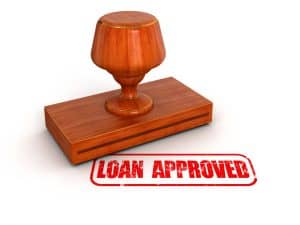A bridge loan, also known as a swing loan, gap financing, or interim financing, is a short-term loan used to finance the purchase of real estate. It bridges the gap between the time one buys a new home and when they sell their old one.
A bridge loan usually lasts for six months. Because it’s a short-term loan, interest rates are typically higher than on a traditional mortgage. However, because the terms are relatively simple, bridge loans can be a valuable option for those who need to move quickly.
Are you considering a bridge loan to finance your next home purchase? Read on to learn more about bridge loans.
How Does A Bridge Loan Work?
Bridge loans are typically taken out for six months to one year and are then paid off with the proceeds from the new loan or line of credit. The interest rate on a bridge loan is higher than conventional mortgages because bridge loans are considered high-risk loans; those buying a new home before selling their current one may not qualify for a traditional mortgage.
There are two types of bridge loans: first mortgage bridge loans and second mortgage bridge loans. A lender provides the borrower with a loan to cover the remainder of their mortgage and down payment for their new home when they receive a first mortgage bridge loan. On the other hand, second mortgage bridge loans provide a down payment for a new home and become a borrower’s second mortgage.
Who Can Benefit From A Bridge Loan?
Bridge loans can benefit many people in different situations. For example, homebuyers waiting for their current home to sell to purchase a new one will benefit from using a bridge loan. In addition, those who need to relocate for work and cannot sell their existing home or those who own a home that needs significant repairs or renovations may also benefit from using a bridge loan.
Bridge loans can also benefit investors looking to purchase a property quickly. Using a bridge loan allows investors to take advantage of opportunities without having to wait for traditional financing.
What Are The Risks Of Taking Out A Bridge Loan?
Before taking out a bridge loan, borrowers should be aware of the following risks:
- Bridge loans are typically more expensive than other loans. Borrowers can pay up to 3% in closing costs and rates up to 10%, depending on the loan amount and the borrower’s credit score.
- Those unable to sell their current home may be stuck making payments on two properties.
- Bridge loan default could result in foreclosure.
Despite the risks, bridge loans can be a helpful tool for those needing short-term financing.
Alternatives To Bridge Loans
Unsure if a bridge loan is right for you? There are other options to consider.
A home equity line of credit, or HELOC, provides access to funds as the borrower needs them. The borrower only pays interest on the portion of the loan they use. Another option is seller financing, where the property seller finances the buyer’s purchase. While this option doesn’t always require a down payment, finding a seller willing to agree to these terms can be extremely challenging.
The 80-10-10 piggyback loan is another alternative, where the borrower takes out a first mortgage for 80% of the purchase price and a second mortgage for 10% in home equity. The remaining 10% is used as a down payment. Finally, a personal loan can serve many purposes, including home improvement projects, debt consolidation, and more. Personal loans can be an excellent option for those with good credit.
For investors, a bridge loan may not be the best option. Instead, hard money loans or private money loans may be a better fit as they are typically for shorter terms and can be used to invest in real estate.
How To Qualify For A Bridge Loan
Ready to apply for a bridge loan? Like a traditional mortgage, bridge loans require the following qualifications:
- A good credit score: Most bridge loans require a credit score of 620 or higher.
- Proof of income: Borrowers must provide evidence of their income, such as pay stubs, tax returns, or W-2 forms.
- Equity in their current home: To get a bridge loan, borrowers must have 20% equity in their existing home.
- A clear financial plan: Borrowers must have a solid plan for how they will use the bridge loan and how they plan on repaying it.
Additionally, lenders will consider the current housing market. If the market is unstable, it may be more challenging to qualify for a bridge loan.
Borrowers can find bridge loans through online lenders, banks, and credit unions and should compare offers from multiple lenders to ensure they’re getting the best deal possible.
Is A Bridge Loan Right For You?
Bridge loans can be a valuable tool for those who need to cover a short-term cash-flow gap. Before taking out a bridge loan, it’s essential to understand the benefits and risks associated with this type of loan. There are alternatives to bridge loans that may be a better fit for your needs. If you decide a bridge loan is right for you, ensure you meet the qualifications to get the best terms possible.
